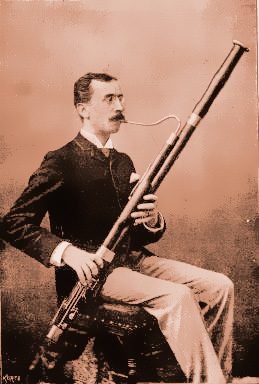
Introductory Course in Woodwind-Quintetology
Why create a List for Woodwind Quintets?
This list is designed to be helpful for amateur and professional musicians, composers, teachers, music historians and even conductors who explore, study, perform, write, and sometimes record woodwind quintets or other wind chamber ensembles. We also include what I call “Woodwind Quintet-Friendly” works, which can include one or more extra instruments. (Woodwind quintet + tuba? Yeah, we got that.) “Friendly” could also combine a woodwind quintet with another ensemble, such as a string quartet or a brass quintet, or another woodwind quintet (creating a dectet, decet, or to some wags, a tentet). We also have other lists of works, too. (More about that below.)
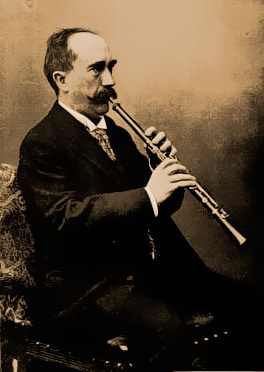
Were/Are there other kinds of wind quintets?
Yes! There were other kinds of woodwind quintets in the late 18th century, but they were not Woodwind Quintets as we know them today. I call them primordial woodwind quintets, with a variety of instrumentations. Most popular back then would be flute, oboe, clarinet, English horn (not French horn) and bassoon or variations on that. These happened to be the primary woodwind instruments of the Classical orchestra (pre-Beethoven).
Other modern alternatives today include Reed Quintets which can include oboe, clarinet and bassoon, possibly with saxophone, English horn, and bass and treble clarinets or maybe a contrabassoon
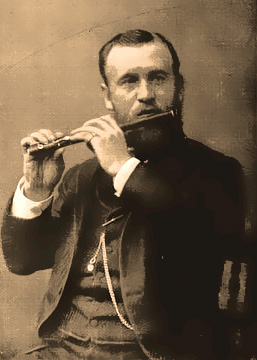
What other popular ensembles for winds existed back in the day?
Another late eighteenth-century trend in wind writing (in contrast to the woodwind quintet – primordial or traditional) was the creation of what is generally known as Harmoniemusik, which used pairs of wind instruments, usually in sextets or octets or larger pairings, sometimes adding a string bass (or a contrabassoon or even a serpent) to add a little oomph to the lower voices. (Oomph is a technical musical term, meaning pizazz.) When creating this list I initially avoided including Harmoniemusik compositions, since it is a very different type of composition lending itself to melody + dense harmony and doubling of the musical lines. Woodwind quintets sometimes do that, too, but you tend to find more solo and duet work and often contrapuntal writing instead of strict harmonic structures. For more info about Harmoniemusik, see What exactly is Harmoniemusik?
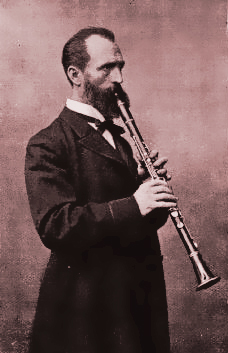
Are there other Names for the Woodwind Quintet?
Almost every language has its own name for a woodwind quintet. For the purposes of this list, we include: Blaasquintet, Blaaskwintet, Blasekvintett, Bläserquintett, Blåskvintett, Cvintet de Suflători, Cvintet pentru Suflātori; Decliové Kvinteto, Dechový kvintet, Duhacki kvintet, Duvacki kvintet, Dychové kvinteto, Houtblaaskwintett, Holzblaeserquintette, Kvintet za pihala, Kvintet, Kwintet, kwintet dety, Puhallinkvintetto, Pihalni kvintet, Puhkpillikvintett, Puhkpillikvintetile, Quintet, Quintet à vent, Quinteto de sopros, Quintet for Winds, Quinteto de Alientos, Quinteto de Vientos, Quinteto per fiati, Quintett für Bläser, духовой квинтет, Quintett, Quintette, Wind Quintet, Woodwind Quintet, and in one case, “Opera Venti.”
Even today, Google Translate (or Microsoft Translate, for that matter), sometimes has trouble translating these foreign terms. In the early day of Google Translate, though, you could get really odd translations. My favorite was in an eastern European language (maybe Polish or Hungarian), where the term was automatically translated as “Quintet of Puffs.”
Is every piece on this website a
woodwind quintet?
We have 25 web pages for woodwind quintets and those aforementioned “woodwind quintet-friendly” works: A-Z without letter X. (Xenakis never wrote for woodwind quintet.) These works may be published or unpublished, manuscripts, part of university dissertations, hidden in dusty library shelves or boxes, just plain lost, or readily available from publishers or online. But Brandt’s Woodwind Quintet Site site has grown, and changed, too.
I long-ago started a list of works for keyboard and winds, basically combining piano (or organ or harpsichord, clavichord, or even accordion) with at least 3 members of the woodwind quintet. Most are for 4 or 5 winds with piano. We now have over 700 works in this list.
I have recently compiled a more up-to-date list of Trio d’Anches (French for reed trios) – another of those specialized musical groups – scored mostly for oboe, clarinet and bassoon. I now have over 850 works in that list.
When I started collecting trio d’anches, I also created a list of “odds and ends” ensembles, which includes wind quartets, trios that are not classified as a Trio d’Anche, and miscellaneous other ensembles, grouped into a “Small Ensembles” page, which seemed too interesting to leave off the website.
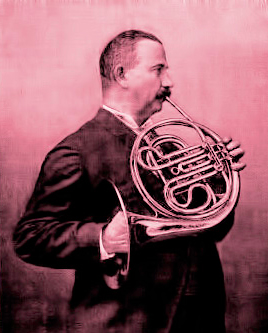
Why is a French horn in the woodwind quintet?
Every newbie to woodwind quintets always, ALWAYS, asks the question (actually a pretty logical one): “Why is there a brass instrument, the horn, in a woodwind quintet?”
To answer that, you need to get into the minds of eighteenth century composers and players, which also gets into brass instrument construction, aesthetics and acoustics. But basically, in the time of Mozart, Haydn, and Giuseppe Cambini, Anton Reicha and Franz Danzi, the members of what would become the woodwind quintet were already busy in the orchestras of the day. They WERE the wind section, which was the section that added a lot of tonal color to that small sea of string instruments. They might be paired (2 flutes, 2 clarinets, etc.) or solo instruments. They were also often soloists.
Brass instruments at that time didn’t have valves, but horns, because they used higher partials in the harmonic series, used crooks (interchangeable pieces of piping) and hand positions to play a full scale, which gave them some more musical flexibility than trumpets and trombones of the day. That way they could keep up with the woodwinds.
When we made the transition from the Classical Period to the Romantic Period, composers gradually started adding more brass, more percussion, and even inventing new instruments to the orchestra. Brass instruments also got valves, which completely changed brass playing technique. But the woodwind quintet stayed the same. By then the woodwinds got used to having the horn around, and so did quintet composers.
One can also point out that early horns without valves played much more softly and were able to blend in with woodwinds. Today horn players can still blend with woodwinds, but they have to want to blend in.
In response to the retort, “That’s totally illogical, having a horn and calling it a woodwind,” we could also point other confusing terms in music, grounded in tradition and not in clarity. A Baroque-period Trio Sonata normally had four players. Piano Trios are usually piano, violin and cello; a clarinet quintet is usually a clarinet plus a string quartet; an oboe quartet is usually an oboe and three strings, but it could also be an oboe, an oboe d’amore, an English horn and a heckelphone. A string quartet is not a random grouping of string instruments, but 2 violins, 1 viola and 1 cello. The name “woodwind quintet,” likewise, is standard nomenclature, not just a random grouping of wind instruments.

Do you, Andy, play in a Woodwind Quintet?
Personally, I started playing in woodwind quintets in high school. I played in woodwind quintets during eight years of college, on four tours with the American Wind Symphony Orchestra, and with the Shreveport Symphony Orchestra Woodwind Quintet (for 25 years) and with the Centenary College Faculty Woodwind Quintet (for about 24 years, overlapping with the SSO quintet). I was also a recorder player and often soloed on both bassoon and recorder with my Baroque music group in Shreveport, also for 25 seasons. I’m retired now and don’t play anymore.
It was in undergraduate school, at Baldwin-Wallace College (now Baldwin-Wallace University) when I started exploring woodwind quintet literature in a systematic fashion. At the time I guesstimated that I might eventually find a few hundred works written for this combination. (After all, every woodwind quintet ensemble I heard back then was playing more or less the same 25 standard pieces.) I now have over 11,000 titles of woodwind quintets (and WW5-friendly works), and the list is still growing and composers are still writing new quintets almost every day it seems.
Credits
Images of musicians are from How to Listen to Music, Hints and Suggestions to untaught Lovers of the Art by Henry Edward Krehbiel, Seventh Edition. New York: Charles Scribner’s Sons. Copyright 1896. The musicians are listed as: C. Kurth, piccolo; Joseph Eller, oboe; Henry Kaiser, clarinet; Fedor Bernhard, bassoon, and Carl Pieper, horn. A digital version of the book is available on Gutenberg.org. The illustrations were color-toned in Photoshop by the author, Andrew Brandt.
Copyright 2024 by Andrew Brandt
Bethlehem, Pennsylvania USA
March 4, 2024

Andrew,
As always thanks for your site, it’s stupendous, and the new design works really well on mobiles!
I had to check on the Oscar Navarro, “Juegos”, and completely agree with your assessment. It’s exceptionally fun to play!
I have a couple of interesting modern quintets to add to your list:
(1) The exciting “Beer Music” by Brian DuFord. A set of 18 dance-style movements plus a (drunken) finale, they’re a fine addition to the repertoire. Details here: https://www.brianduford.com/beer-music.html
(2) “Pareidolie” by Moritz Lassmann. A single movement piece written for the Pacific Quintet, and a great recording by them on YouTube: https://www.youtube.com/watch?v=zmLpWuEunpk
I wrote to Moritz to request a copy, which he sent very quickly!
Hi Geoff,
Thanks for the comment and for the heads up on the new woodwind quintets. It’s been a long slog getting the site back up, and there are still some details that need fixin’. Please tell other musicians about the site!
Best wishes,
Andy